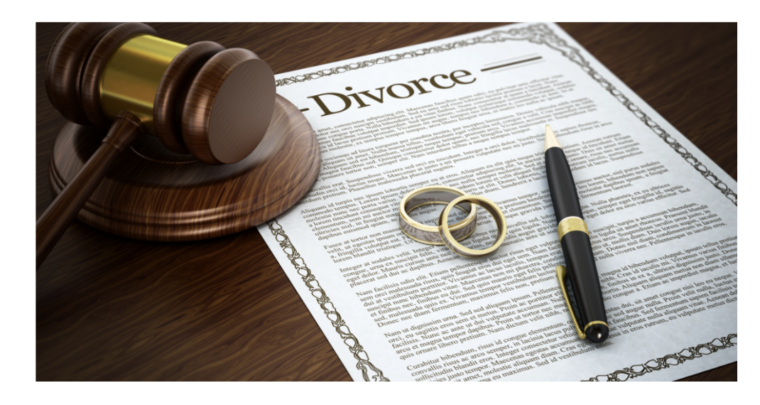Understanding the legal process of an uncontested divorce: A step-by-step guide
“When people divorce, it’s always such a tragedy. At the same time, if people stay together it can be even worse.”

Collect all necessary documents and information
Namely:
- get a notarized copy of your marriage certificate in the county where you got married;
- Gather copies of your driver’s license, passport, or any other government-issued identity documents;
- Gather financial documents such as bank statements, tax returns, pay stubs, and investment portfolios. It is important to have a clear understanding of your joint assets and debts;
- create a list of marital property, including real estate, vehicles, furniture, appliances, jewelry, etc., as well as their approximate value;
- Prepare birth certificates or adoption documents for the children involved in the divorce. Also, gather information about custody arrangements if they have already been established.
By gathering these important documents and information early in the divorce process, you will be better prepared for the next steps. Keep them in a secure folder or file so that they are easily accessible throughout the uncontested divorce process.
File a divorce petition with the court
To do this:
- Familiarize yourself with the specific requirements and laws of the divorce. Each state or country may have different rules, waiting periods, and grounds for divorce;
- consult an attorney (optional). Although uncontested divorces usually do not require legal representation, it can still be helpful to consult with an attorney who specializes in family law. He or she can provide guidance on how to proceed in your particular divorce case;
- obtain copies of the necessary forms from your local court or online resources. These forms typically include a summons, a complaint or petition for divorce, a financial statement, and any additional documentation relevant to your case;
- be careful when filling out these forms, as they will serve as official documents in your case. Provide accurate information regarding the personal data of both spouses, details of the marriage, including the date and place of marriage, grounds for divorce, child custody arrangements, and division of property and assets.
Filing for divorce marks an important milestone in initiating the legal dissolution of your marriage. By understanding and complying with the specific requirements set forth in the respective divorce laws, you can ensure a smoother divorce process going forward.
Serve the divorce papers to your partner
In an uncontested divorce, serving the divorce papers to your spouse is a vital process. It involves adhering to the jurisdiction’s specific regulations and making use of valuable resources like Harris County online divorce services to guarantee that your partner is duly notified of the divorce, facilitating the progression of your uncontested divorce.
Wait for a response from your partner or their attorney
To do this:
- familiarize yourself with the specific timeframe within which your spouse must respond;
- Be patient during this waiting period. Keep the lines of communication open with your ex-partner, especially if you have agreed on uncontested terms of the divorce and want the process to go smoothly;
- seek legal advice, especially if you have any difficulties or disputes at this stage;
Remember that each case is unique, and response times may vary depending on individual circumstances and court schedules.
Fill in any required financial information
Namely:
- all relevant financial documents, including bank statements, tax returns, pay stubs, investment portfolios, and any other records that provide a complete picture of your joint finances;
- use resources such as online divorce services or consult an attorney to obtain the necessary forms to complete your financial information. This could be a net worth statement or an income and expense statement;
- take care to complete these forms accurately, providing details of your income, expenses, assets, debts, and any other relevant financial information. Make sure you disclose all relevant information.
By quickly and accurately completing any required financial information, you not only comply with legal requirements but also set the stage for a fair division of property and support arrangements in an uncontested divorce.

Try to negotiate to reach a settlement agreement
To wit:
- determine what is most important to each party and set clear goals for the outcome of the divorce settlement;
- make sure you have accurate and up-to-date information regarding assets, debts, income statements, expenses, and any other relevant financial details;
- Consultation with a mediator or a lawyer who works with lawyers can facilitate productive negotiations due to the neutrality of these individuals;
- maintain open lines of communication with your spouse during the negotiations to express concerns and discuss possible solutions to the issues surrounding the divorce;
- Once you have reached an agreement on all relevant issues, clearly document it in writing. This will help you properly draft a formal settlement agreement or submit a proposed order to the court.
By following these rules during the divorce negotiation process, you can reach a mutually acceptable settlement that meets the needs of both parties.
Submit the settlement agreement to the court for approval
To do this:
- Work with your spouse to create a comprehensive document that addresses all aspects of your divorce, including child custody and support arrangements, division of property and debts, alimony (if applicable), and any other relevant issues;
- Read the settlement agreement carefully to ensure accuracy and clarity. Make any necessary changes or amendments before filing;
- Use resources such as online divorce services to simplify the process. These platforms provide convenient access to forms, instructions, and guidelines related to the divorce process;
- Send copies of the finalized settlement agreement, along with all necessary supporting documents, to the appropriate court for verification.
By following these steps, you can ensure that your settlement agreement is properly submitted to the court for approval. Once approved, you will be one step closer to an uncontested divorce.

Attend the final hearing to finalize your divorce
To do this:
- contact the court clerk or use the online system to schedule a date for the final hearing;
- Before the hearing, make sure you have gathered all the necessary documents and papers, including financial information, settlement agreements, and any other relevant materials;
- You and your former partner should present your case at the final hearing. This may include confirming that both parties are in agreement on key issues such as child custody arrangements, division of property and assets, and any spousal support, if applicable;
- if everything went smoothly and in accordance with all legal requirements during the last hearing, you will receive a final divorce decree signed by the judge. This document formally confirms your divorce.
Get a copy of the final divorce decree from the court
To do this:
- contact the court where your case was filed to obtain a copy of the final divorce decree;
- pay any necessary fees, as some courts may charge a fee for providing copies of legal documents, including divorce decrees;
- Fill out the necessary documents. The court may require you to fill out special forms or provide an identity document before issuing a copy of the final judgment;
- after submitting all the necessary documents and paying the fees, periodically contact the court to make sure that your request has been processed. Once approved, you can receive an official copy of the final divorce decree.
Obtaining a copy of the final divorce decree is an important step in finalizing an uncontested divorce. It confirms your legal status as a divorcee and ensures that both parties know their rights and obligations going forward.
Update legal documents and notify the relevant parties of the divorce
Here are some key tasks to consider at this stage of the uncontested divorce process:
- If you have a will, review it to reflect any changes to beneficiaries or assets as a result of the divorce;
- Review and update beneficiary designations in life insurance policies, retirement accounts, bank accounts, and any other relevant financial documents x;
- Notify banks, credit card companies, mortgage lenders, and other financial institutions of the pending divorce. Provide them with a copy of the final divorce decree as soon as it is issued;
- Review health insurance coverage for both partners, if necessary. Remove one of the spouses from car insurance policies if they will no longer be driving together.
By following these steps, you can ensure a smooth transition to life after divorce while protecting yourself legally. It is always advisable to consult an attorney who specializes in family law to assist you with this aspect of your uncontested divorce.
